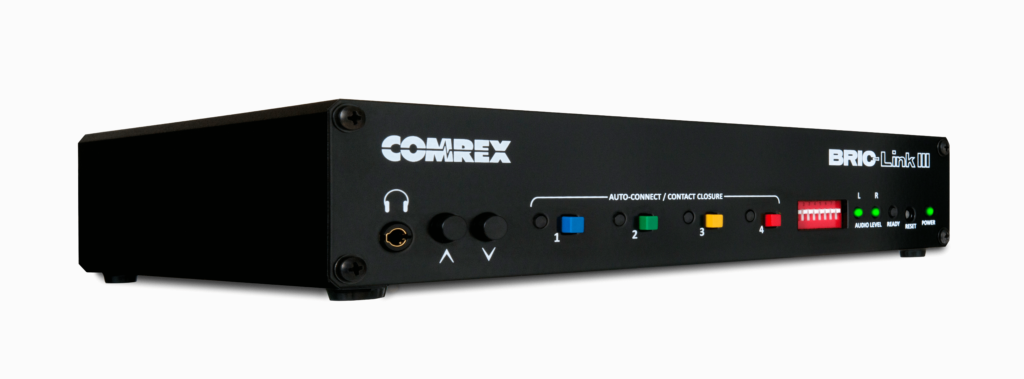Origins
Back in 2005 Comrex introduced the Access range of products that harnessed technology that allowed broadcasters to use public internet for peer-to-peer high quality audio connections with low latency. Although not the original intended application for the Access range of codecs, Comrex learnt that some of their customers were using a pair of the rackmount Access units for STLs (studio to transmitter links) – they then took it upon themselves to design a product suited to this specific requirement and similar applications.
In 2009 Comrex release the first version of BRIC-Link which housed a 2-channel codec with ¼” jack audio I/O, contact closures and RS-232 serial connection in a compact enclosure. It was a basic unit in comparison to the full-feature Access units but had everything need for STLs and crucially was designed to be connected 24/7.
BRIC-Link II
In 2015 the BRIC-Link II refined the product placing it in a standard half 1U enclosure with XLRs replacing the ¼” jacks and the addition of a front panel headphone amp to monitor the audio input or decoded audio. It also added a USB port that can be used as a second network link: either with a USB to Ethernet adapter or via a 4G Comrex Connect modem – with two network connections Comrex’s Crosslock technology can be configured as a bonded network, for redundant transmission or as HotSwap to switch over in the event of one network failing.
More applications
Not only was the BRIC-Link II now even better suited for STL with the redundant Crosslock option but was now widely used for host of other applications – primarily anywhere where two fixed locations, such as two studios, needed to be connected. Add example here, could be good if we know of a customer actually doing something and also something that would be a visual aid that we could fake.
Additionally IP Multicast mode is available to send information to many devices including Opus compatible web browsers or as an HTTP streaming server. Where as many as 170 people can pull an AAC v2 stream from a single BRIC-Link II and can also be used as a source feed for Icecast (is this something you should explain?) Again, this could be an area strengthened with an IRL example. It will also help to break up this super chunky paragraph.
BRIC-Link II has proved invaluable in recent years with the need for contributors to work remotely including from home – it’s ability to offer ISDN like results on public internet with lossless transmission make it equally suited to connect a voice over artist’s home studio to a production house or for a radio show to have a remote contributor’s web browser connect just by sending them a link and quality and reliability is always assured. Firmware updates, such as the addition of the Opus algorithm in 2018, have kept the BRIC-Link up to date but now the hardware refinements have been added to the latest version of BRIC-Link.
New BRIC-Link III
Previewed at NAB earlier this year, the third incarnation of BRIC-Link is now available. This latest version adds contact closure quick connect buttons on the front panel for convenience and ease of use as well as a new power indicator and a more powerful processor – perhaps indicating further feature development possibilities… Investing in a BRIC-Link III solution today will ensure years of reliable future proofed operation.
For more information on BRIC-Link III contact the HHB Communications sales team.



